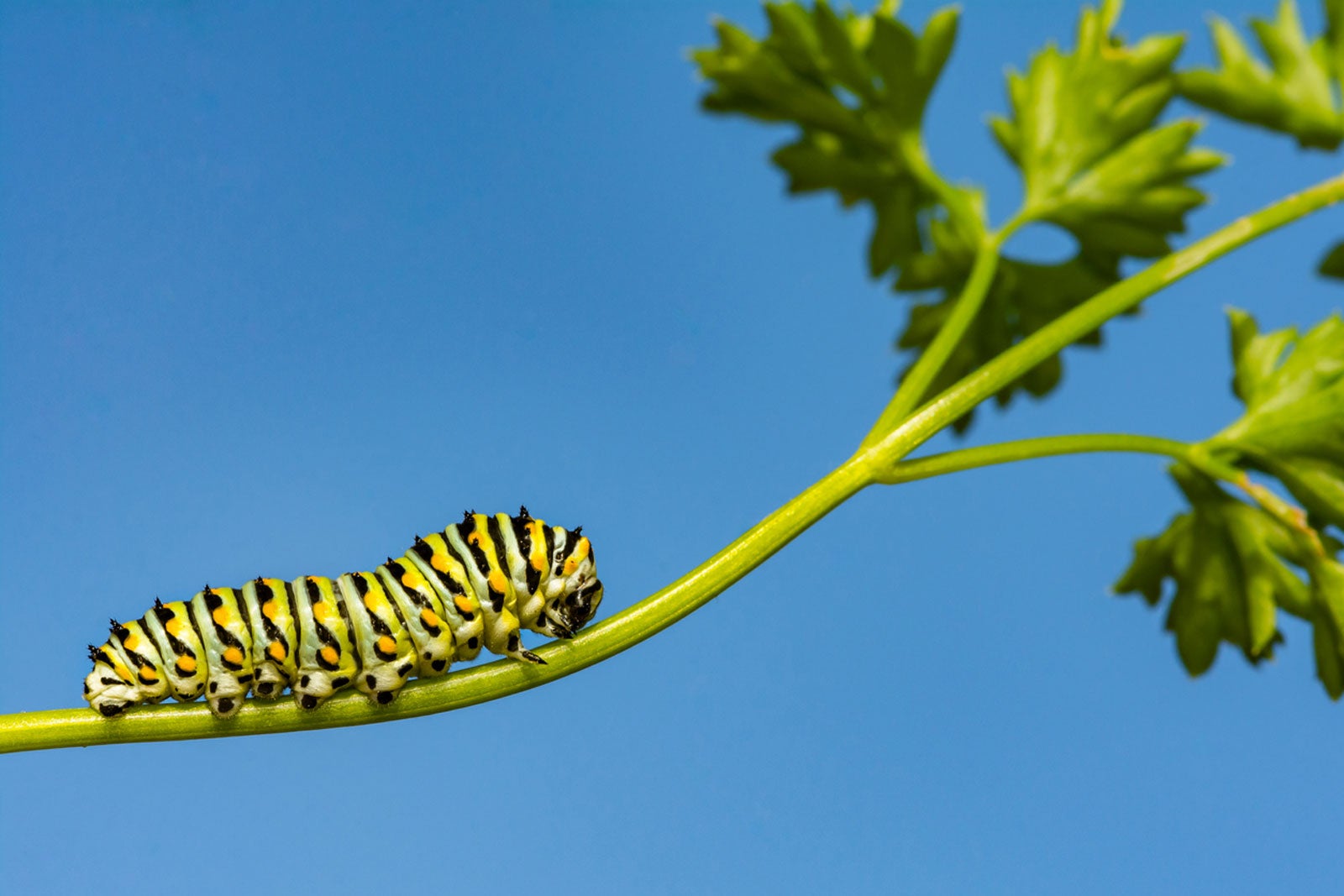Worm Control On Parsley: Information On Deterring Parsley Worms

If you happened to notice worms on your parsley, dill, or an occasional carrot, chances are they are parsley worms. Read on to learn how to manage worms on parsley.
What are Parsley Worms?
Striking caterpillars, parsley worms turn into even more striking black swallowtail butterflies. They are easily identifiable as green worms with a brilliant, yellow dotted black band across each body segment. When the caterpillar is disturbed, it protrudes a pair of fleshy “horns,” the better to scare predators away. This larval stage of the gorgeous black swallowtail can grow up to 2 inches (5 cm.) long.
Parsley Worm Life Cycle
Female black swallowtail butterflies are slightly larger than males and, as is usual in nature, a bit duller in color than their male counterparts. The wingspan may be up to 76 mm (3 in.). Both are velvety black in color with tailed hind wings marked with peacock-like eyes. The females lay spherical, 1 mm (0.05 in.) across eggs that change in color from pale yellow to reddish-brown. Four to nine days later, the eggs hatch and young larvae (instars) emerge and begin feeding. The yellowish-green parsley worm is the butterfly's larval stage and its body is transverse with black bands and yellow or orange spots. The “horns” mentioned above are actually scent organs. The young larvae look similar but may have spines. The pupa or chrysalis appears dull gray and mottled with black and brown and is around 32 mm (1.25 in.). long. These pupae overwinter attached to stems or fallen leaves and emerge as butterflies in April-May.
How to Control Parsley Worms
Worm control on parsley is fairly simple if you really desire their eradication. They are easy to spot and handpick. They are also naturally attacked by parasites, or if you must, insecticides such as Sevin or Bacillus thuringiensis will kill off the caterpillars. Although parsley worms are voracious eaters, the benefit of attracting a future pollinator (and a stunning one at that) may outweigh worm control practices on parsley. Me, I would just plant a few more parsley, dill, or whatever the insects are feeding on. Healthy plants will usually recover from the foliage loss and parsley worms will not sting or bite humans. Deterring parsley worms is a bit more difficult. If you find the caterpillars truly objectionable, you might try row covers. Covering your tender crops may aid in deterring parsley worms.
Gardening tips, videos, info and more delivered right to your inbox!
Sign up for the Gardening Know How newsletter today and receive a free copy of our e-book "How to Grow Delicious Tomatoes".

Amy Grant has been gardening for 30 years and writing for 15. A professional chef and caterer, Amy's area of expertise is culinary gardening.
-
 Looking For Plants To Give You The Soft And Fuzzies? Try These 5 Fuzzy Leaf Plant Options
Looking For Plants To Give You The Soft And Fuzzies? Try These 5 Fuzzy Leaf Plant OptionsLovers of texture, drama, silver foliage and tactile plants will adore these special sensory garden additions. These fuzzy leaf plant options will leave you all aglow
By Susan Albert
-
 Get Ready For A Summer Of Hummers! Grow These Full Sun Hummingbird Plants and Flowers
Get Ready For A Summer Of Hummers! Grow These Full Sun Hummingbird Plants and FlowersIf you’re lucky enough to enjoy a sunny backyard, make sure you are maxing out on your pollinator opportunities and grow these full sun hummingbird plants and flowers
By Tonya Barnett